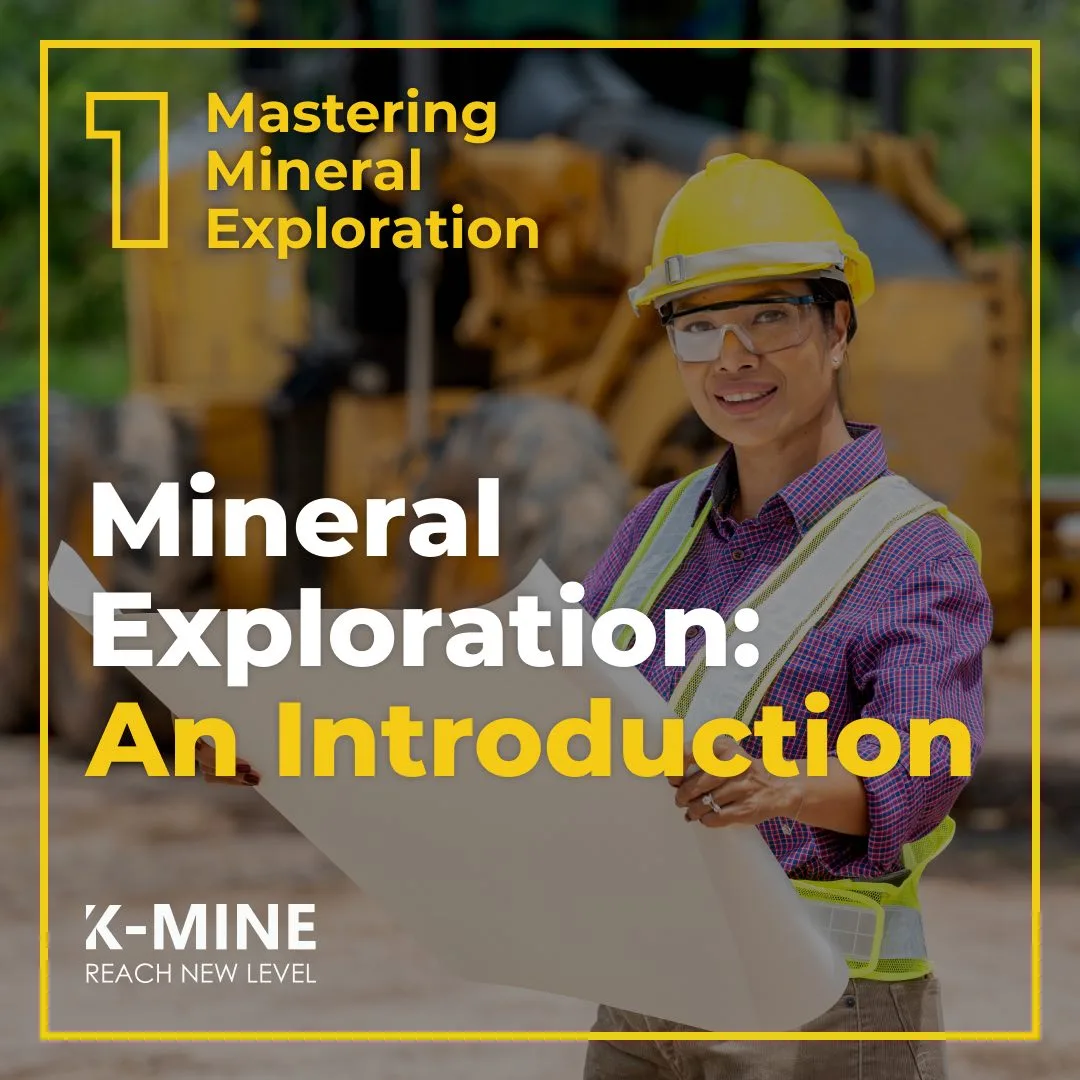
Content
Welcome to the world of mineral exploration. This engaging and challenging field forms the foundation of the mining industry, driving the discovery of new mineral deposits that can support a myriad of societal needs, from construction materials to high-tech device components. But what does mineral exploration entail exactly?
Mineral exploration is a methodological and systematic process to locate and identify commercially viable concentrations of minerals in the Earth’s crust. It’s an intricate dance of science, engineering, and a bit of luck, all striving for the ultimate goal: the discovery of economically extractable mineral deposits.
Exploration can be likened to a journey or an adventure, one that begins with a concept—a theoretical idea about where valuable minerals may reside—and potentially culminates in discovery. But the route is not linear, nor is the outcome guaranteed. Success requires a deep understanding of the Earth’s geological processes, an eye for spotting anomalies, a touch of intuition, and, importantly, the patience and persistence to navigate the iterative cycles of the exploration process.
In this article, we embark on a journey through the foundational elements of mineral exploration. We’ll chart the exploration process’s complex stages, touch on the diverse techniques employed, discuss the challenges faced, and glance at the role technology plays in shaping modern exploration. Welcome to the exciting adventure that is mineral exploration. Stay tuned as we delve deeper into this captivating subject in our upcoming articles.
The Critical Role of Mineral Exploration
Mineral exploration is instrumental in several interconnected realms, each playing a crucial role in societal development and global prosperity.
Firstly, mineral exploration ensures a constant supply of vital minerals. The elements of our modern life—from the steel in our infrastructure to the copper in our electronics, the gold in our jewelry, and the coal powering our industries—are sourced from minerals. The ongoing discovery of new mineral deposits is critical to meet the escalating global demand and replenish depleting resources.
Secondly, mineral exploration can stimulate economic development, especially in isolated or undeveloped regions. Establishing a new mine can bring about job creation, infrastructure development, and auxiliary industries, thus invigorating local economies and improving living standards. Nevertheless, it’s paramount to balance these economic gains with environmental stewardship and societal wellbeing, fostering sustainable development that respects local communities and ecosystems.
Lastly, mineral exploration propels our understanding of the Earth. As exploration geologists examine the cryptic evidence concealed within rocks and landscapes, they contribute to our knowledge about Earth’s history, the forces shaping its surface, and the movements of its tectonic plates. This geoscientific understanding informs a wide array of applications, from forecasting natural disasters and finding water resources to prospecting for minerals. Indeed, the journey of mineral exploration is a fascinating one that spans years or even decades, driven by scientific curiosity, technological breakthroughs, and the allure of discovery.
Unraveling the Phases of Mineral Exploration
Mineral exploration is an iterative, complex, and multistage process that unfolds over several years, if not decades. To help simplify the concept, we can visualize it as a sequence of progressive stages, each building on the previous and feeding into the next.
- Preliminary Reconnaissance: This is the broad-brush first pass of exploration. It relies heavily on existing geological maps, literature, and remote sensing data. The goal is to identify prospective areas – often vast in scale – that bear the right geological conditions for mineralization.
- Prospecting and Field Mapping: Following the desktop study, geologists venture onto the field. They conduct ground surveys, geological mapping, and sampling. They study rock formations, landforms, and other physical features that might indicate the presence of a mineral deposit.
- Geophysical and Geochemical Surveys: To further zero in on promising locations, geologists deploy more sophisticated methods. Geophysical surveys measure physical properties like magnetism, gravity, or electrical resistivity of the rocks to infer their subsurface structure. Geochemical surveys analyze the concentration of specific chemical elements in rocks, soils, or water, seeking anomalies that hint at a mineral deposit.
- Exploratory Drilling: When all signs point to a promising subsurface target, exploratory drilling is conducted. The drill cores retrieved provide direct information about the rock types, structures, and mineral content below the surface. This is often the most expensive part of exploration but also the most conclusive.
- Resource Estimation and Feasibility Study: If the drill results are promising, a mineral deposit is defined. Geologists and mining engineers then work together to estimate the size and grade of the deposit (the resource estimation). They assess the technical and economic feasibility of mining the deposit, considering factors such as ore extraction methods, environmental impacts, market conditions, and financial investment.
Through these stages, mineral exploration strives to reduce geological uncertainty, providing robust evidence to turn a concept – a hunch about a potential mineral deposit – into a discovery. But remember, not every exploration project will yield a mineable deposit; the process is intrinsically risky and speculative, yet essential to our mineral-dependent world.
Insights into Exploration Techniques
Throughout the multifaceted journey of mineral exploration, a suite of advanced scientific techniques are employed to decipher the geological secrets hidden beneath the Earth’s surface. These techniques, fine-tuned over the years, allow us to probe deeper, with greater precision and confidence.
- Geophysical Surveys: Geophysics is the cornerstone of non-invasive exploration techniques. It includes methods like magnetic surveys that detect variations in the Earth’s magnetic field caused by different rock types, gravity surveys that map density variations in the subsurface, or seismic surveys that use the reflection or refraction of induced shock waves to image the subsurface structure.
- Geochemical Surveys: Geochemical techniques involve the collection and laboratory analysis of samples (rocks, soil, water, vegetation) to detect anomalies in the concentration of certain chemical elements or isotopes. These anomalies might indicate a hidden mineral deposit.
- Remote Sensing and GIS: Remote sensing involves the use of satellite or aerial imagery to study the Earth’s surface. Alongside Geographic Information System (GIS) technology, remote sensing can provide valuable insights into the geology and topography of the exploration area, even before setting foot on the field.
- Drilling and Sampling: Drilling is the most direct method to understand the subsurface. It retrieves core samples that can be examined for their mineral content, geological age, and physical properties.
- Geostatistics and Resource Estimation: Once a potential deposit is identified, geostatistics is used to estimate its size and grade. This involves sophisticated statistical techniques to deal with the inherent variability and uncertainty of geological data.
These techniques, when combined, provide the geologist with a toolbox of possibilities to identify and define a mineral deposit. In forthcoming articles, we’ll delve deeper into each of these techniques, exploring their methodologies, strengths, and challenges. But for now, let’s round off our introductory discourse on mineral exploration.
Confronting Challenges in Mineral Exploration
Like any scientific endeavor, mineral exploration comes with its fair share of challenges. These often complex issues span a wide array of areas, from logistical and technical complexities to vital environmental and social considerations. Let’s take a closer look at these:
- Logistical Challenges: Mineral exploration often takes place in remote and inaccessible regions. This presents unique logistical challenges, such as transporting heavy equipment, setting up temporary accommodations, and ensuring a regular supply chain for fuel, water, and food.
- Technical Challenges: Geological data is inherently complex and variable. Interpreting this data and making reliable predictions about the subsurface requires a high level of expertise and often, a fair bit of educated guesswork. Advanced geostatistical tools and techniques help, but they also require skilled personnel to operate them.
- Financial Challenges: Mineral exploration is an expensive endeavor. It can take years, sometimes decades, of sustained investment before a deposit is found and a mine can start to generate profits. This necessitates the ability to secure funding and manage budgets efficiently.
- Environmental and Social Impact: Mining has undeniable impacts on the environment and local communities. It’s vital that mineral exploration practices minimize these impacts as much as possible, from the planning phase all the way through to eventual mine closure. This means conducting thorough Environmental Impact Assessments, engaging with local communities, and planning for rehabilitation and restoration from the get-go.
- Regulatory Compliance: Mining operations are subject to strict regulations to protect the environment, workers, and local communities. Navigating these regulatory landscapes, which can vary greatly from one jurisdiction to another, is a crucial aspect of mineral exploration.
These challenges can be daunting, but they are not insurmountable. Through innovation, responsible practices, and the spirit of collaboration, the mining industry continues to push the boundaries of mineral exploration while striving for sustainable and socially responsible outcomes. In our next segments, we’ll explore these challenges in more detail, alongside the exciting opportunities that await in this fascinating field.
The Integral Role of Technology in Mineral Exploration
Technology has been a game-changer in the field of mineral exploration, transforming the landscape in profound ways. Today, advanced tools and techniques allow us to explore deeper, faster, and more accurately than ever before, significantly boosting efficiency while reducing our environmental footprint. Here’s a glimpse into some of the transformative ways technology has impacted mineral exploration:
- Remote Sensing and Geospatial Technology: These tools have revolutionized the way we gather and interpret geological data. Satellite imagery, airborne geophysical surveys, and geographic information systems (GIS) now enable us to analyze vast regions quickly and with great precision, minimizing the need for intrusive ground-based surveys.
- Drilling Technology: Advancements in drilling technology have made it possible to reach deeper into the earth, extract more data from boreholes, and do it all more safely and efficiently. Techniques such as directional drilling and wireline logging have become indispensable in modern mineral exploration.
- Analytical Technology: Modern analytical technologies can detect and quantify the presence of minerals in samples with incredible precision. Instruments such as X-ray fluorescence (XRF) and inductively coupled plasma mass spectrometry (ICP-MS) have become staples in the geochemical analysis of exploration samples.
- Data Management and Modeling Software: With the vast amounts of data generated during exploration, effective data management has become crucial. Software solutions allow us to store, analyze, and visualize this data, creating detailed models of the subsurface that guide exploration efforts.
- Sustainable Technology: Technologies focused on reducing the environmental impact of mineral exploration have also been gaining ground. This includes cleaner drilling techniques, low-impact survey methods, and equipment powered by renewable energy.
These are just a few of the ways technology is reshaping mineral exploration. In future articles, we’ll delve deeper into these technological advancements, exploring how they’re used in practice and how they may evolve in the future. These developments not only make mineral exploration more efficient and accurate but also pave the way for more sustainable practices.
Conclusion
In this article, we’ve touched upon the key facets of mineral exploration – a critical first step in the mining process. Mineral exploration, underpinned by scientific curiosity and a thorough understanding of geological processes, is all about identifying and characterizing valuable mineral resources that can be developed into profitable mining ventures.
We’ve examined what mineral exploration is, why it’s important, and its various stages – from initial studies to detailed fieldwork. We’ve also skimmed the surface of the diverse techniques used in mineral exploration and the challenges faced by explorers. Lastly, we’ve emphasized the transformative role of technology, which has drastically changed the way we explore, promising a future of more efficient and sustainable mineral discovery.
This article serves as a precursor to a detailed journey into the world of mineral exploration. In the next installment of our series, we’ll delve deeper into the fundamental building block of mineral exploration – Geology. So, join us as we unfold the intricacies of understanding and interpreting the Earth’s crust in the pursuit of mineral wealth. Stay tuned!



 Back
Back